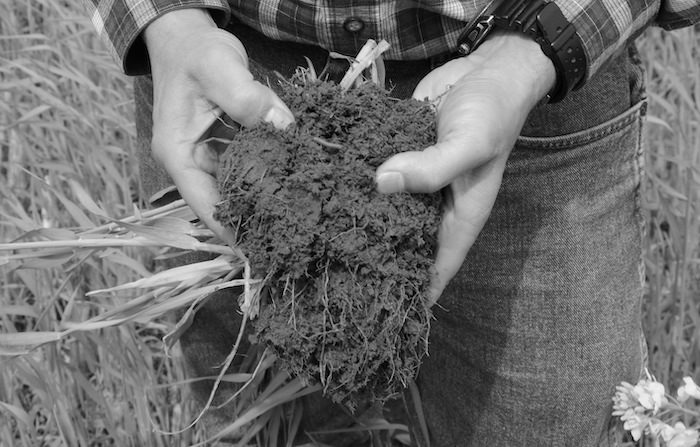If you've ever been to a no-till gathering or conference, such as the National No-Tillage Conference, you’ve heard testimonial after testimonial about the soil metamorphism that occurs when making the switch from conventionally-tilled ground to no-till. Farmers say it better holds moisture, and isn’t easily disturbed; something especially beneficial to farmers prone to drought or erosion.
But does anyone know why? Sure, you might say, it’s because of the root structure left in the soil. But is that the only reason?
Thanks to a study done by Sara Wright at the U. S. Department of Agriculture in Beltsville, Md., we now know the answer. It has to do with root structure and careful soil management practices. It also lists no-till as the best practice available to keep soils and plants healthy, not that you needed us to tell you that.
What She Found
A green material was discovered in 1996. The only initial observations about the substance was that it was a hardy material that was produced by a certain strain of fungi.
What resulted is the discovery of glomalin, eventually providing yet another explanation why no-till soils are far more healthier than conventionally tilled soils. The glomalin, belonging to a group of soil fungi, acts as a glue to help stabilize your soils.
Apparently the fungi is beneficial to plants as well as the soil, because hyphae, or the hair-like structures that project from the fungus, explore more soil than plants can reach and carry phosphorus to the plant. Since this growth only happens where there is an active colonization of roots, no-till soils are again the best choice for healthy soils and plants.
In part of the study conducted by the USDA, conventionally tilled fields were compared to no-till fields. As you would expect as avid no-tillers, the no-till fields far out performed the conventionally tilled soils.
Wright’s recommendations to increase glomalin in soils are common practices among no-tillers. They are:
1. Use No-Till
“Tillage disrupts the hyphal network that produces glomalin,” she says.
2. Use Cover Crops
Living roots are essential for the colonization of the fungi.
3. Watch The Phosphorus
“Maintain adequate phosphorus level for crops, but do not over-apply phosphorus because high levels depress the activity of these fungi.”
To most of us, this only crystallizes the idea that there is no better way to provide for healthier soils and crops than to no-till. But there may be another benefit to this discovery. It might provide yet another point of discussion at the local coffee shop with that conventional tiller who just doesn’t know what he’s missing out on.







Post a comment
Report Abusive Comment